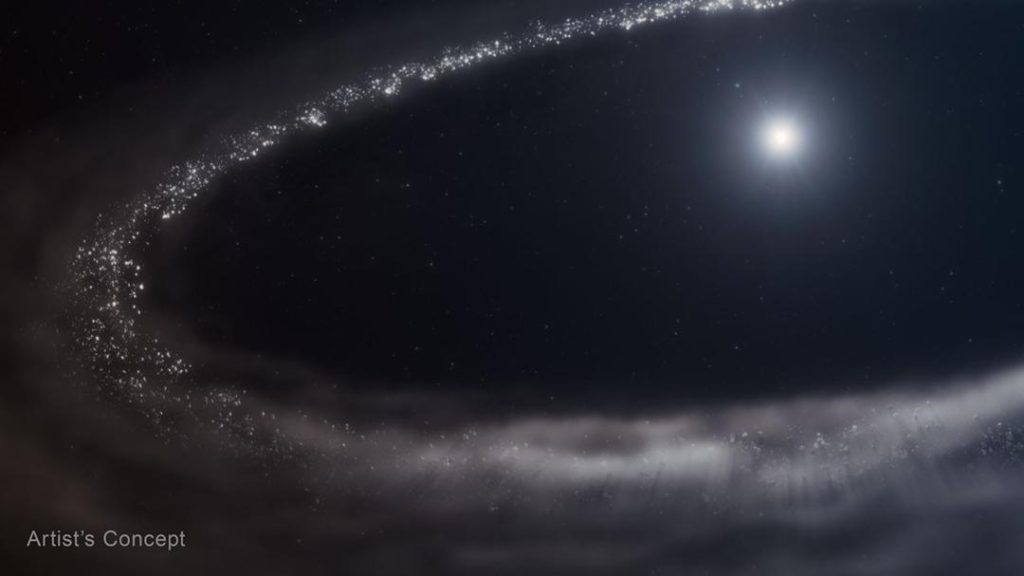
NASA’s Webb Telescope Identifies Frozen Water in Young Star System
In a groundbreaking discovery, NASA’s James Webb Space Telescope has confirmed the presence of crystalline water ice in a dusty debris disk that orbits a Sun-like star. This remarkable find marks a major milestone in the study of planetary formation and the search for life beyond Earth. The detection of frozen water ice in this young star system is a significant step forward in understanding the building blocks of life.
The discovery was made in a debris disk surrounding the star HD 163296, a young star located about 330 light-years from Earth. This star is about 5.5 million years old, which is relatively young in astronomical terms. The debris disk is a swirling disk of dust and gas that surrounds the star, thought to be the remnants of a planet-forming process.
The James Webb Space Telescope, launched in December 2021, has been designed to study the universe in infrared light, which allows it to peer through dust and gas to detect faint objects. In this case, the telescope used its Mid-Infrared Instrument (MIRI) to observe the HD 163296 system.
Researchers from the University of Michigan, led by Dr. Ted Bergin, used the James Webb Space Telescope to study the HD 163296 system in unprecedented detail. They analyzed the light reflected by the debris disk, looking for signs of crystalline water ice. After months of data collection and analysis, the team made a startling discovery: the presence of frozen water ice in the debris disk.
The water ice is not present as isolated particles but is instead paired with fine dust particles throughout the disk. This finding is significant because it suggests that the water ice is likely to be incorporated into the formation of planets, potentially providing a habitat for life to emerge.
The discovery is not entirely unexpected, as previous data from the retired Spitzer Space Telescope hinted at the possibility of frozen water in this system. In 2008, Spitzer’s data revealed the presence of a large amount of dust in the HD 163296 system, which suggested that the star might be surrounded by a dusty debris disk. However, the exact composition of this disk remained unknown until now.
The James Webb Space Telescope’s detection of frozen water ice in HD 163296 is not only a significant scientific finding but also a testament to the power of this new telescope. The James Webb Space Telescope is designed to study the universe in unprecedented detail, and its first few months of operation have already yielded numerous groundbreaking discoveries.
The discovery of frozen water ice in a young star system like HD 163296 has important implications for our understanding of planetary formation and the search for life beyond Earth. It suggests that the building blocks of life are present in the early stages of planetary formation, providing a promising environment for life to emerge.
In conclusion, the James Webb Space Telescope has made a groundbreaking discovery in the study of planetary formation, detecting crystalline water ice in a dusty debris disk surrounding a young Sun-like star. This finding has significant implications for our understanding of the origins of life and the potential for life to emerge in other star systems.
News Source:






